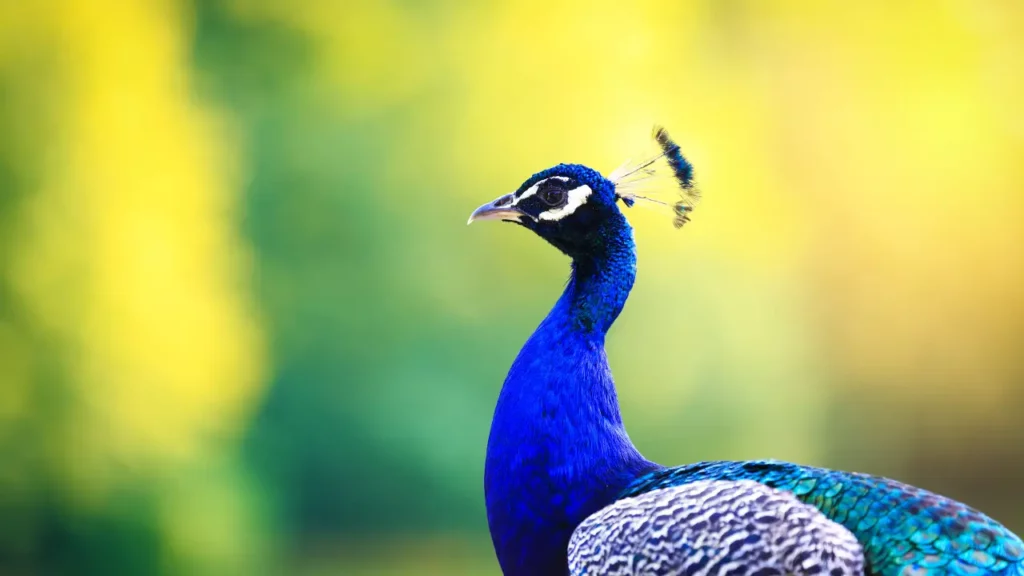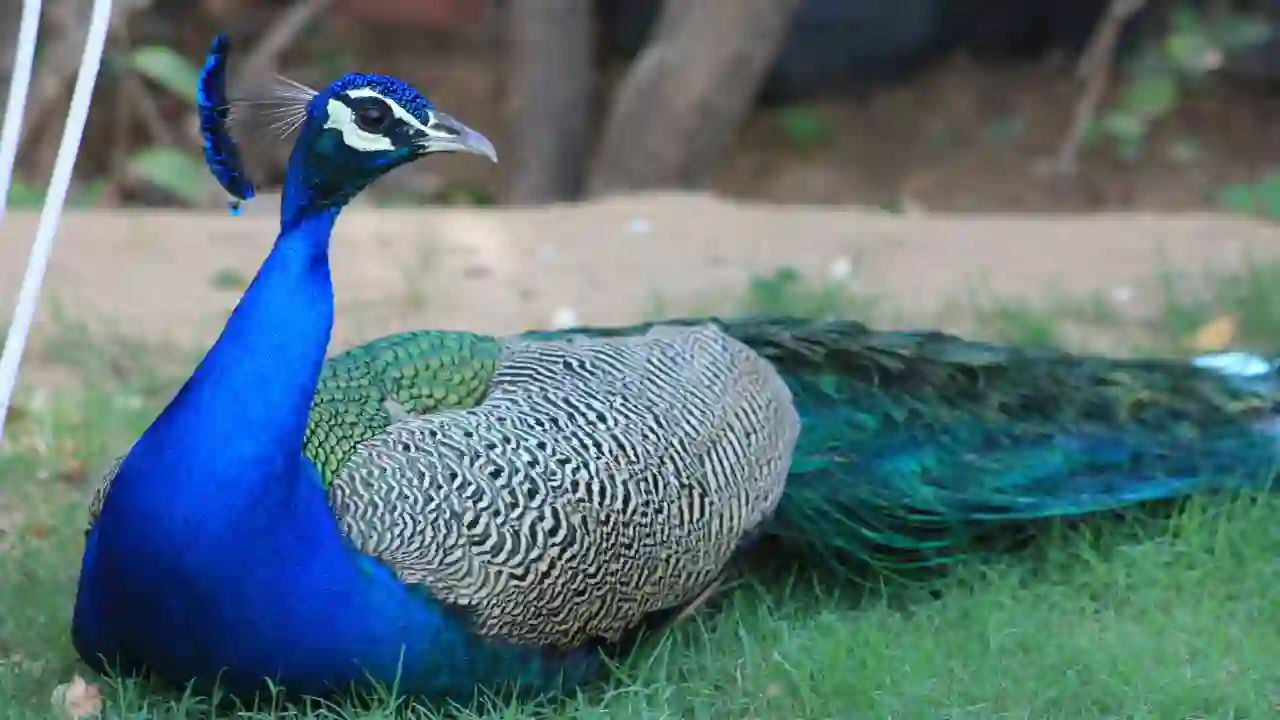Peacocks are usually intriguing birds. Every time they have roamed freely in parks, they have been a huge draw. This is due to the dazzling hues, interactions they have with people, and fanning out of their gorgeous feathers. So, it’s only common if you are piqued to know about them.
More interesting is that the feathers of the peacocks are the many terms used by people to refer to a group of peacocks. These words include ostentation, muster, pride, party, harem, lek, psemtatopm, and others.
Don’t fret if you don’t know anything about them. We hope this article will give you a better understanding of these wonderful birds.
Read on to discover more >>>>>
The Three Species Of Peacock

Peacock is just the male member of the peafowl family, so we will discuss the species of peafowl, rather than the peacock.
Peafowl exist in three distinct species.
The blue or Male Indian peacocks (Pavo cristatus) and the green or Javanese peacocks (Pavo muticus) are the two species of the peacocks that are most easily identifiable.
The Congo peacock, (Afropavo congensis), was found and identified later in the 1900s.
Based on the species, peafowls might look slightly different. The Indian peacock features flamboyant, brightly coloured feathers, which include a blue head and neck.
The face and neck of Javanese peafowl are covered with green feathers.
Both Indian and Javanese peafowl have crests on top of their heads consisting of feathers arranged in a fan pattern, as well as exposed areas of skin around their eyes.
Compared to the other two species, Congo peafowl has a less striking look. Bright blue with iridescent green and violet undertones characterises the feathers of a Congo peacock.
Peahens are typically chestnut brown in colour with black abdominal stripes, metallic green backs, and short chestnut brown crests.
All peacock varieties are equally impressive, and the green peacock bears a striking resemblance to the Indian peacock, except for its vibrant green color instead of blue.
Why Is It An Ostentation Of Peacocks?

This sounds like the most apt term that could have been bestowed to refer to a group of birds gifted with such magnificent displays.
Their incandescent, dazzling plumes are a show on their own.
On top of that, their mating rituals which include males to spread their feathers in the form of a surrounding aura make anything related to peacocks ostentatious.
The terms from the English vocabulary implies something that impresses people.
Based on the meaning of the word, I figure a group of these interesting creatures is only befit to be called an ostentation.
Why Is It A Pride of Peacocks?

Anyone who has witnessed a peacock in action is familiar with the swagger-filled strut that adult male peacocks do when spreading their feathers gradually in the shape of a dazzling and colourful aura along with a soft rustling sound.
Peacocks’ behaviour exudes an in-built sense of pride in themselves which, when noticed through the eyes of earlier ethologists must have prompted them to assign a group of peacocks to be called a ‘pride’.
Why Is It A Muster Of Peacocks?
Muster is generally used in the context of the military and it is a call given to soldiers to collect for battle, inspection or preparation. Animal world is no less than a battle zone. Birds and animals survive daily to live.
In such situations, it is often that these birds flock in large groups at the slightest hint of danger just akin to the military readiness ethos of human troops.
It is possible that previous zoologists who studied animal behaviour got inspired by this to name a group of peacocks a muster.
Peacocks muster not only to fight the enemy but also to be inspected by females in wooing rituals.
Other Terms For A Group Of Peacocks
There are just three species of peafowl in the world, yet despite this, they have at least ten distinct group names, which we shall discuss in more depth below. These are some of the most common terms for a group of peacocks:
A Harem of peahens (female birds only)
A Lek of peacocks (adult male birds only)
A Bawl of peacocks (adult male birds only)
A Cluster of peacocks (adult male birds only)
A Party of peacocks
A Pulchritude of peacocks
A Bevy of peacocks
A Pstemtatopm of peafowl
Why Is It A Harem Of Peahens?

A harem is a common term for the female groups that accompany a single male. Kings of the olden times used to have their dedicated harems.
The same term finds its usage in the context of peacocks because peacocks typically engage in a behaviour known as polygyny.
Female peacocks pick a partner depending on his plumage at the start of the breeding season.
Because of this, it is typical to observe females in groups of three or four and with a single male counterpart who typically rules over his harem of breeding females. The term “harem of peahens” refers to this situation.
According to scientists, the long, fluffy plume of the male peacock attracts females and aids them in judging a male’s fitness by its rustling and swaying.
Until they deposit an egg clutch, these harems forage alongside the males. Also note, only female peacocks are described as a harem of peahens.
Why Is It A Lek of Peacocks?
Lekking is actually a common behaviour among adult male birds of the Phasianidae family.
The Phasianidae family includes not just peacocks, but also roughly about 180 types of peafowl, pheasants, grouse, and other birds.
The word lek which has eventually gotten used to describe a group of peacocks gets its name from the arena or lek, a part of the breeding field wherein birds contest by putting on competitive wooing rituals to draw good female breeding stock.
As a result, a group of peacocks is regularly alluded to as a lek.
Why Is It A Bawl Of Peacocks?
Peacocks’ distinct mating calls are a signature breeding behaviour, which have earned them both popularity and ignominy alike.
During displays within leks, which are an important wooing ritual before mating, male peacocks frequently hoot loudly at the female birds they are attempting to impress during mating.
These calls frequently seem uncontrolled and boisterous.
When many peacocks call loudly or cry, the noise is referred to as bawling, which is another word for shouting.
The word bawling got picked up from such behaviour of peacocks when they congregate in large numbers and gets used to describe a group of peacocks.
Why Is It A Cluster Of Peacocks?
Cluster is yet another term used to describe a group of peacocks. This can be used similarly for any other species of bird, animal or humans even because the word cluster simply refers to a collection of individuals who are drawn together to create a group.
It is used to describe mature male peacocks in this instance when they congregate prior to lekking during the mating season.
Such clusters are frequently seen during the breeding season as peacocks roost in closely situated nests for protection from predators through collective security.
Why Is It A Party Of Peacocks?
If you have ever been fortunate to observe a group of peacock fanning out their sprawling feathers in the most ostentatious manner.
You are likely to imagine the scene as a vibrant party where the individuals are best-dressed, dancing around and enjoying to the core.
I believe someone might have applied the same imagination and decided to call a group of peacocks a party and the same got passed down to our times.
Why Is It A Pulchritude Or A Bevy Of Peacocks?
Pulchritude or bevy are similar words with both meaning ‘beautiful’. The word pulchritude, however, is of
Spanish origin and in the context of animals or birds (as here), it applies to males and females alike.
Bevy, on the other hand, can be used for peahens only as it is used to describe a group of ladies in the context of humans.
Why Is It A Pstemtatopm Of Peafowl?

Pstemtatopm is an obscure word with its meaning not known, however this word frequently finds mention in references coming from the southern hemisphere, notably New Zealand.
With the meaning not known, it is difficult even to surmise on what must have prompted the knowledge builders of antiquity to call a group of peacocks a pstemtatopm.
Fun Fact
The Indian peafowl holds the esteemed position of being the national bird of India and enjoys protected status within the country.
On other hand, green peafowl can be found in Java and Myanmar.
Do Peacocks Flock Together In Large Groups?
Before the mating season, peacocks organise into flocks and graze in huge groups. They separate into smaller flocks during the mating season, each consisting of a few females and one male. They can congregate in sizable groups for safety after the mating season too.
Young male peacocks frequently establish such groups or flocks and dwell together in these groupings.
Peahens and peacocks flock in order to travel, hunt for food, and build roosts as well. To protect themselves from potential predators, they would perch high up in a tree in flocks.
Their flocking behaviour actually reflects that Peacocks are opportunistic creatures who exhibit behaviours that support their survival better.
They graze and travel in flocks for safety and better food finding chances, they consume everything they can get their hands on.
They are omnivores; they consume snakes, amphibians, and insects.
Flowers, seeds, and even grains are among the plant products they consume. Caged peacocks also consume a significant amount of grains.
How Many Peacocks Are In A Flock?
Peacocks are enormous birds, so you can’t expect them to flock in hundred unlike some small birds. Typically, a flock of peacocks consists of four to ten distinct individuals. \
A flock usually contains a male member and its harem consisting of four to five peahens. Sometimes, a flock may contain more than one male for strengthening the security of the flock.
I speak from experience when I say that raising peacocks with other birds does not go well.
If you intend to grow them in your backyard, you must build your coop to house them separately. When housed in close proximity to others of their species, they are rather sociable and pleasant.
What Do You Call a Group Of Baby Peacocks?
There is no specific term to refer to a group of baby peacocks, however, they themselves are described differently. Peacocks breeding and nesting behaviour shows how smart these creatures are.
In order to create their nests, females dig a hole into the ground and line it with reeds and twigs. To avoid being discovered by predators, these nests are tucked away behind plants.
Female peacocks deposit a few eggs and nurse them in the nest after coupling with a male.
After about a month, the young peacocks begin to hatch. Peachicks is a term that has been used to describe this kind of hatchlings.
For around six months, peachicks stay with their mother. Male birds do not contribute to raising the offspring.
Final Thoughts
Peacocks or peafowls in general are referred to by a variety of names. Muster, ostentation, party, and pride are a few of them.
All these terminologies are derived from a particular behavioural trait of peafowls. They are all officially recognised terminology for a group of peafowl, the phrase you use is entirely up to you.


